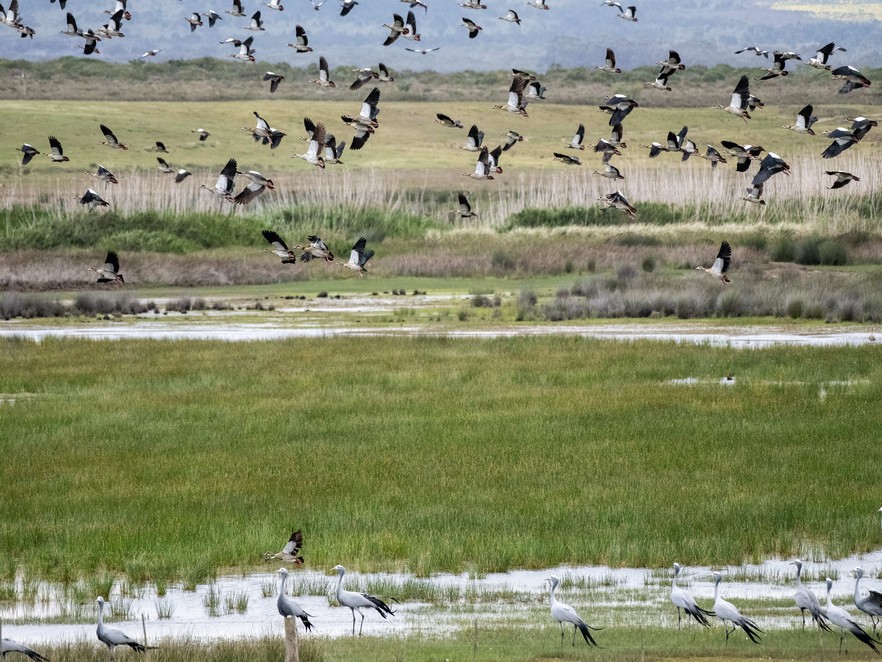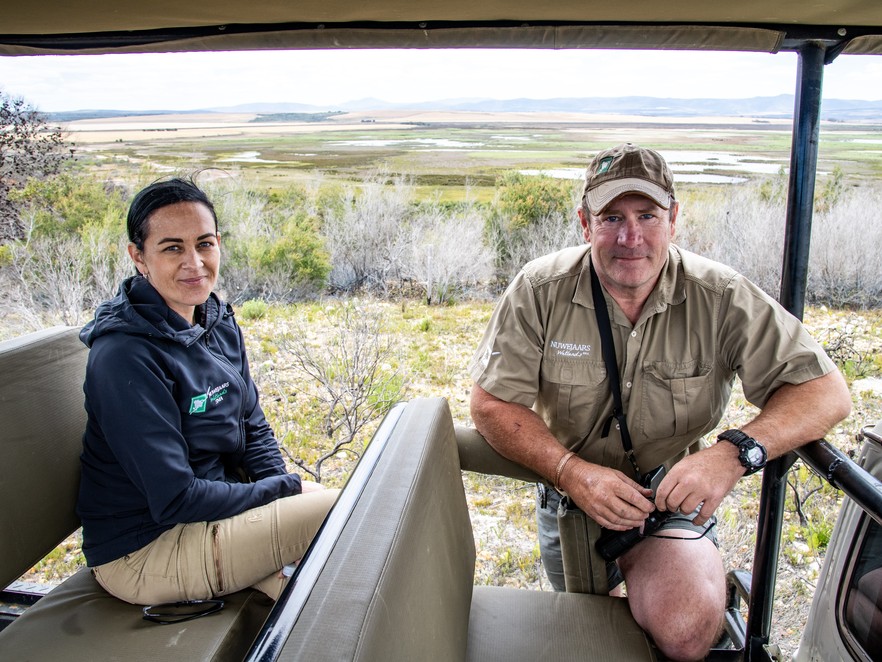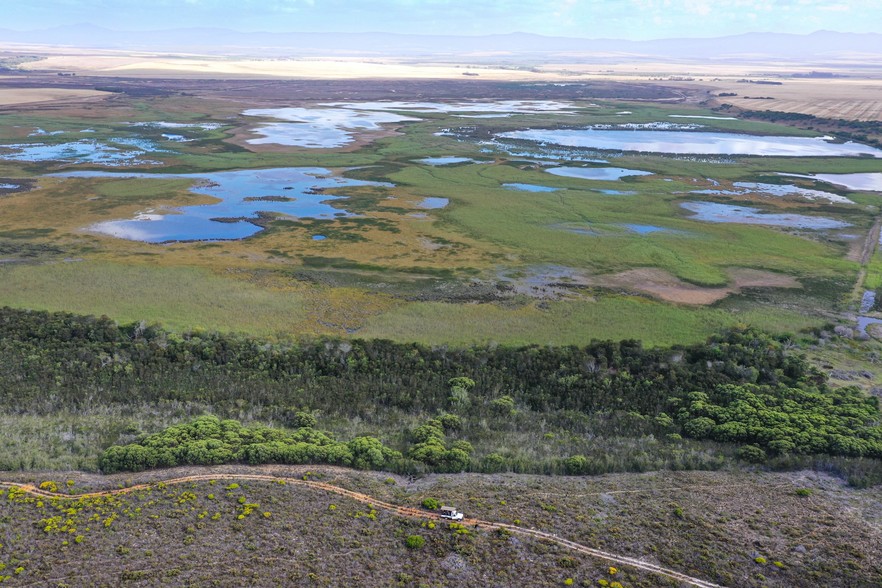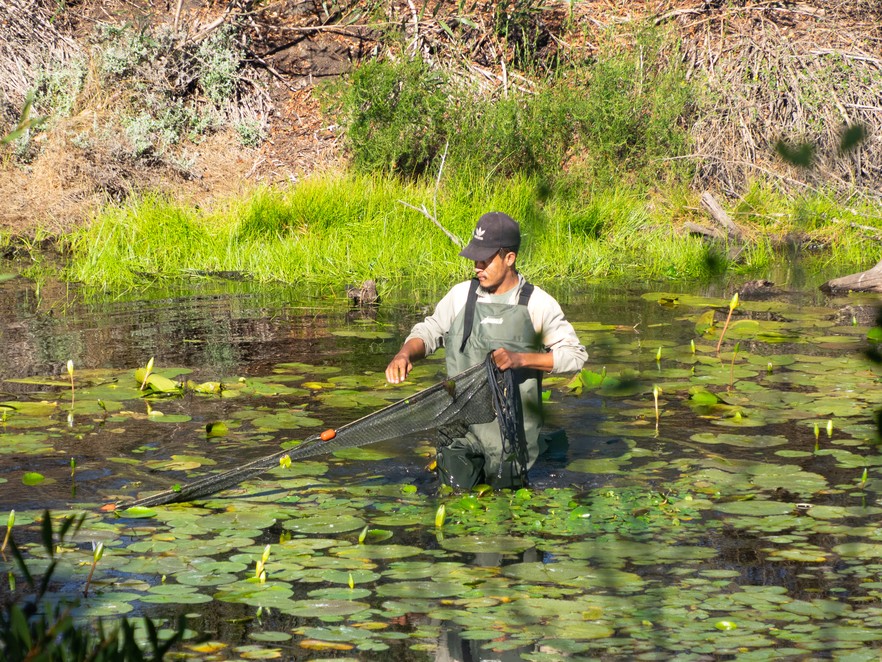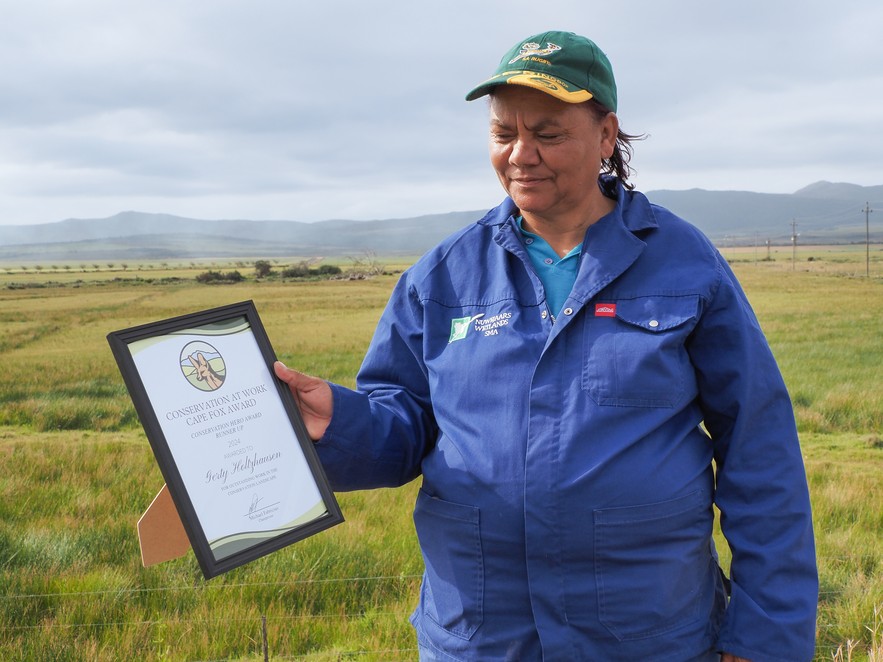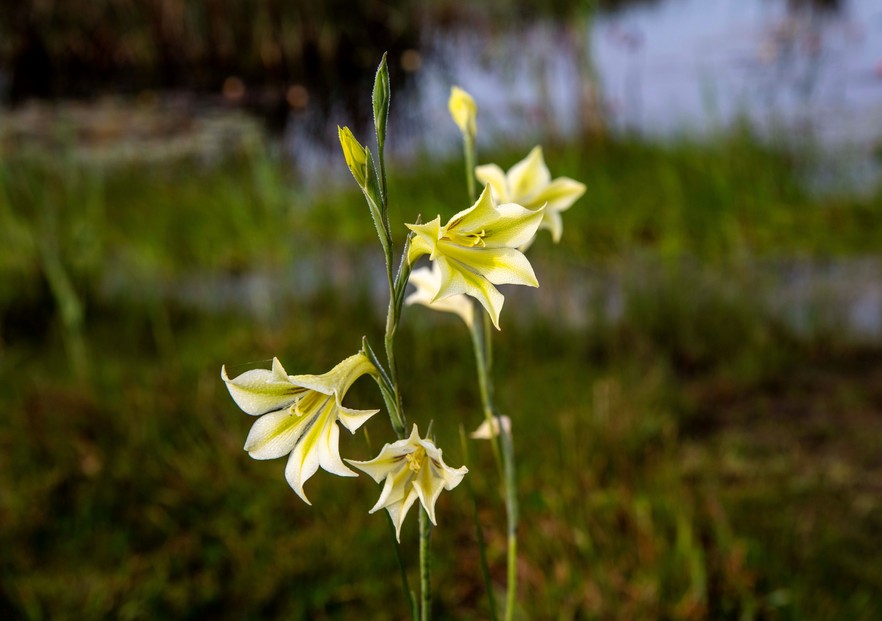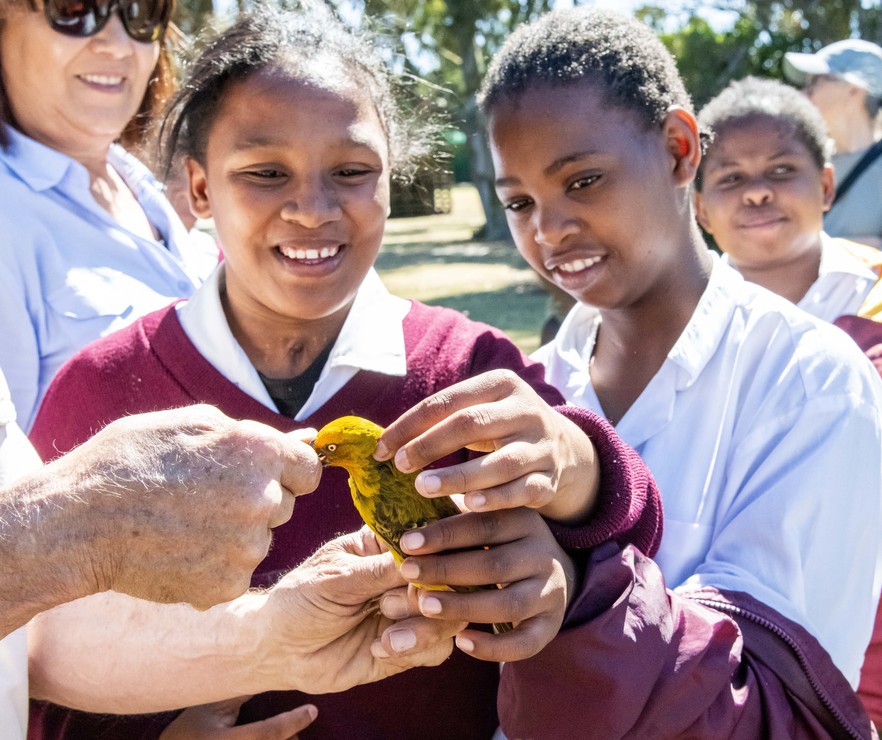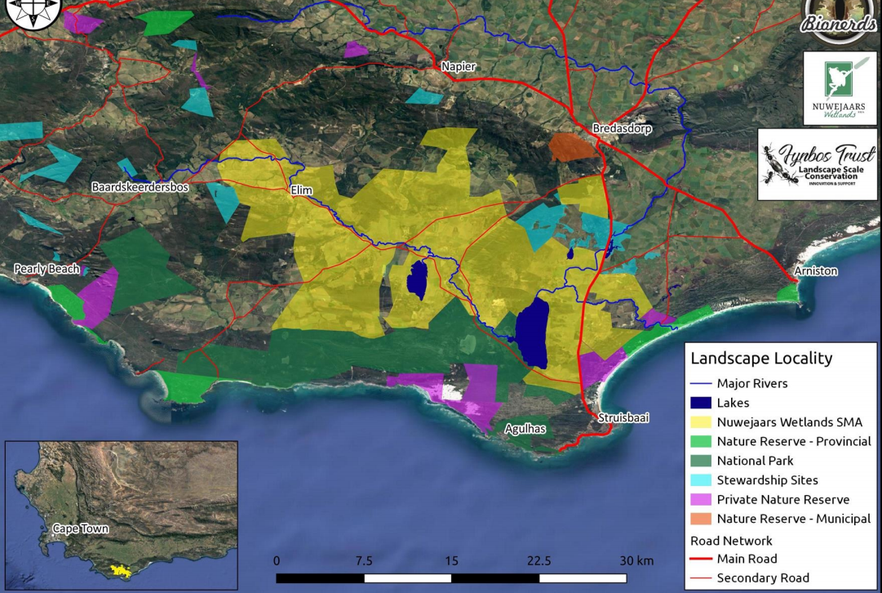How a group of landowners brought the Agulhas Plain back to life
The Nuwejaars Wetlands Special Management Area was established in 2008
A huge flock of Egyptian Geese takes off from a wetland area of the Nuwejaars River on the Agulhas Plain, watched by Blue Cranes. Extensive clearing of invasive alien plants by the Nuwejaars Wetlands Special Management Area has restored significant bird habitat. Photo: John Yeld
- In 2008, 26 landowners on the Agulhas Plain established the Nuwejaars Wetlands Special Management Area to manage and restore 47,000 hectares of their biodiversity-rich properties at the southern tip of Africa.
- They made binding commitments in their title deeds to restore the ecosystem across the region “where nature can thrive, wetlands recover and people benefit through green employment opportunities”.
- Thousands of hectares have been cleared of massive invasive alien trees that were choking vital wetlands and river banks.
A group of landowners sat around a table in August 2003 and signed a Statement of Intent, binding them to work together for a new, environmentally healthy and sustainable future for the Agulhas Plain.
Collectively, the properties of the original 11 signatories and subsequent additional associates now cover about 47,000 hectares of cultivated farmland, wetlands, river systems and pockets of natural vegetation that make up this unique region at the southern tip of Africa.
Their decision is bringing benefits to an even bigger area and touching a new generation of people in the region.
The agreement committed the signatories to develop and promote “best practice” sustainable farming methods on the cultivated sections of their properties – roughly half of the total area – while also working to conserve and reconnect the remaining 23,000-odd hectares of indigenous vegetation and natural ecosystems across their lands.
Nuwejaars Wetlands Special Management Area conservation manager Erica Brink and operations manager Ross Kettles. In the background is part of the wetlands where hippos were reintroduced after being shot out more than 150 years ago. Photo: John Yeld
It was a tough decision that required a sharp break with traditional farm practices based on extensive fences and self-focused management decisions.
The agreement also meant the landowners would commit to new restrictive clauses in perpetuity in the title deeds to their properties, many of which had been family-owned for generations.
They were under no illusion that the restoration of the severely degraded areas would be difficult and expensive, particularly in the wetlands and riparian areas that are the lifeblood of the region but were being choked by massive alien invasive plant infestations.
One of the original 11 signatories, Dirk Human, recalled that the group’s early conversations “felt both daring and necessary”. It took courage to try something new and unproven, he wrote later in an annual report. “We also made a commitment to each other to ask what we want our landscape to look like 100 years from now, and then build plans to make that a reality,” he says. Human, the owner and founder of Black Oystercatcher Wines in the Nuwejaars region, is the elected chairman.
Their accord held and their vision for the area gained traction, leading to the non-profit Nuwejaars Wetlands Special Management Area (NWSMA). It was formalised five years later in December 2008, with an expanded group of 26 landowners, one of which was the Moravian mission village of Elim, signing the new association’s constitution and title deed restrictions on their properties.
These restrictions bind members to the association’s vision: “To protect and manage the consolidated core and buffer area of the NWSMA and its interface into one functioning ecosystem. Forming an innovative system for conservation on private land, while providing environmental education, and sustainable socio-economic activity and tourism opportunities”.
A drone view of part of the Nuwejaars Wetlands Special Management Area (NWSMA) on the Agulhas Plain at the tip of Africa. Much of the area was previously covered by dense alien invasive plants. Photo supplied by the NWSMA.
Over the past 17 years, the NWSMA has become a role model for responsible custodianship and cooperative conservation action on private properties.
But the agreement was forged at a time when ecological damage on the Agulhas Plain was severe.
In the early 1990s, just 4% of this huge area was under any form of formal conservation. Too-frequent fires, invasive plants and habitat transformation were taking their toll on the land. In particular, the vital wetland system that threads through the area was under major threat.
One of the biggest of its kind in South Africa, the Nuwejaars wetlands are an irreplaceable water resource for people and wildlife. The wetlands were being severely damaged by 69 alien invasive plants – woody species including Australian Acacia trees like Port Jackson and Long-leaf Wattle – that clogged the river and streams, consumed vast quantities of water and choked indigenous vegetation.
Close to 1,800 indigenous plant species have been identified in the region. Among these, 160 were classified as being of “Conservation Concern”.
In this bird paradise, where the Agulhas Plains birding project has identified more than 300 species, monitoring showed that many of the wetland specialist birds were being forced out.
Environmental monitor Breyton Murtz conducts indigenous fish sampling in the Nuwejaars wetlands in work funded by the Mohamed bin Zayed Species Conservation Fund, where an endangered endemic fynbos species – the Agulhas redifin – was scientifically described this year. Photo supplied by the NWSMA.
Erica Brink, the conservation manager of the Nuwejaars River Nature Reserve – the non-profit implementing agent of the NWSMA – has been in her post for eight years.
She recalls looking out across the valley to what should have been a beautiful view of the Nuwejaars River soon after starting her new job. “But all we could see was wall-to-wall aliens. You couldn’t see anything past that,” she says.
Restoration work in the special management area started in September 2009, with alien invasive plant clearing operations targeting wetlands and riparian areas.
First-phase clearing, subsequent follow-ups and associated rehabilitation such as indigenous tree planting have continued on a project basis, although not all exclusively by the NWSMA. Funding has come from various sources and work has also been coordinated by other implementing agencies, including local and national government.
Award-winning entrepreneur Gerty Holtzhausen of Bredasdorp heads a 10-person invasive clearing team that has been tackling most of the dense and difficult to remove aliens in the Nuwejaars Wetlands Special Management Area. Photo supplied by the NWSMA.
Last year alone, 3,470 hectares were cleared of invasive plants, 118 hectares of the wetland system was burnt for ecological restoration, and water quality testing was performed at 168 sites – in work supported by donors, including Hans Hoheisen Charitable Trust, the Mapula Trust and the Mohamed bin Zayed Species Conservation Fund.
Through clearing programmes, an estimated 300 jobs have been created, directly affecting about 5% of all people living in the Cape Agulhas Municipal area. One such project is funded by WWF South Africa from a bequest by avid bird-lover Elizabeth Harding.
Initially set up as a three-year project to clear a 440 hectare section in the Nuwejaars River wetlands, this has since been rolled over twice, and clearing has now reached about 960 hectares. “That project was catalytic. That’s where we really started and it put us on the map. It completely transformed this whole Nuwejaars wetland,” says Brink.
“After the initial clearing we found all sorts of different things, including the critically endangered micro frog and a new indigenous Cyrtanthus lily called the Nuwejaars Lily.
“Because the funding stipulation was for improving bird habitats, we did a lot of bird monitoring, and found different birds as well as mammals and plants coming back. Wetlands are quite resilient, and it showed what can happen if you just remove the aliens.”
A gladiolus species, Gladiolus tristis, also known as the Marsh Afrikaner or Aandblom (evening flower), blooming in the Nuwejaars Wetlands Special Management Area. Photo: John Yeld
Over the years, large indigenous mammals have been reintroduced into the NWSMA – including buffalo, hippo, eland, hartebeest, bontebok and the “Rau quagga”. These serve natural ecological functions as grazers and increase the tourism potential of the region.
Environmental education is another important component of the NWSMA work.
“We started this programme during the WWF alien clearing project and added it to the outcomes we wanted to achieve because it’s so important in conservation,” Brink explains. “Passing on knowledge and making children aware and giving them passion for the natural world.”
During the last financial year, more than 450 learners from surrounding schools took part, including learners from Elim Primary, Mispah School for Learners with Special Educational Needs in Elim, Zoetendal Academy in L’Agulhas, Bredasdorp Primary and the Khula Learning Centre in Bredasdorp.
Mary-Jane Julies (left) and Mihle Sigeney from the Mispah School for Learners with Special Educational Needs in Elim village hold a Cape Weaver during a bird ringing demonstration by the Biodiversity and Development Institute. This is part of an environmental education week organised by the Nuwejaars Wetlands Special Management Area. Photo: John Yeld
Operations Manager Ross Kettles says they’re proud of the NWSMA’s conservation model. “It remains our dream to come up with a model that is replicable in other areas, encouraging the restoration of ecosystems,” he says.
Human also speaks of his pride in helping shape a new landscape on the Agulhas Plain “where animals that became locally extinct here once again roam, where rivers flow as they should, cleared of the threat of invasive alien plants, and where wetlands that were once degraded are now alive with bird calls and teeming with life”.
“None of this happened overnight,” he says.
Brink describes the project as being “remarkable” and says she is thankful to be part of it. The environmental education programme, in which her own daughter has been a participant, is particularly close to her heart.
“It’s been such a hit! Just getting them out of the school and into nature, watching them touch birds that are being ringed or helping to catch frogs and indigenous fish … We’ve realised that we have to carry on with this and so it’s a priority for us now,” she says.
The Agulhas Plain at the southernmost tip of Africa. The yellow area denotes the privately owned Nuwejaars Wetlands Special Management Area. Image supplied by NWSMA.
Support independent journalism
Donate using Payfast

Don't miss out on the latest news
We respect your privacy, and promise we won't spam you.
Letters
Dear Editor
I write to salute you for the extraordinary work you have undertaken on the Agulhas Plain. Your decision as a collective of landowners to place shared ecological stewardship at the heart of your farming landscape is an act of courage, vision and deep public spirit.
By binding your properties through title deed restrictions, and committing in perpetuity to restore wetlands, river systems and indigenous vegetation, you have shown that private land can be managed as a genuine public good. The large-scale clearing of invasive alien trees, the recovery of wetland habitats, and the return of iconic species such as buffaloes, hippos and blue cranes are living proof that damaged ecosystems can be healed through cooperation, science and persistence.
Equally inspiring is your commitment to “green jobs” and to ensuring that local people benefit from the restoration economy. In a country grappling with unemployment, climate shocks and biodiversity loss, your model demonstrates that caring for land and water can also sustain dignified livelihoods and local pride.
Your work offers a powerful example for conservancies, municipalities and landowners across South Africa: that landscape-level conservation is possible when neighbours choose collaboration over fragmentation, and when long-term ecological health is placed above short-term gain.
I hope that your story is widely shared in schools, in farming organisations and in government, and that it helps to shape policy support and funding for similar initiatives in other catchments and biomes.
Please accept this letter as a small expression of deep gratitude and admiration. May the Nuwejaars Wetlands Special Management Area continue to thrive, and may your courage inspire many others to bring their own landscapes back to life.
© 2025 GroundUp. This article is licensed under a Creative Commons Attribution-NoDerivatives 4.0 International License.
You may republish this article, so long as you credit the authors and GroundUp, and do not change the text. Please include a link back to the original article.
We put an invisible pixel in the article so that we can count traffic to republishers. All analytics tools are solely on our servers. We do not give our logs to any third party. Logs are deleted after two weeks. We do not use any IP address identifying information except to count regional traffic. We are solely interested in counting hits, not tracking users. If you republish, please do not delete the invisible pixel.

